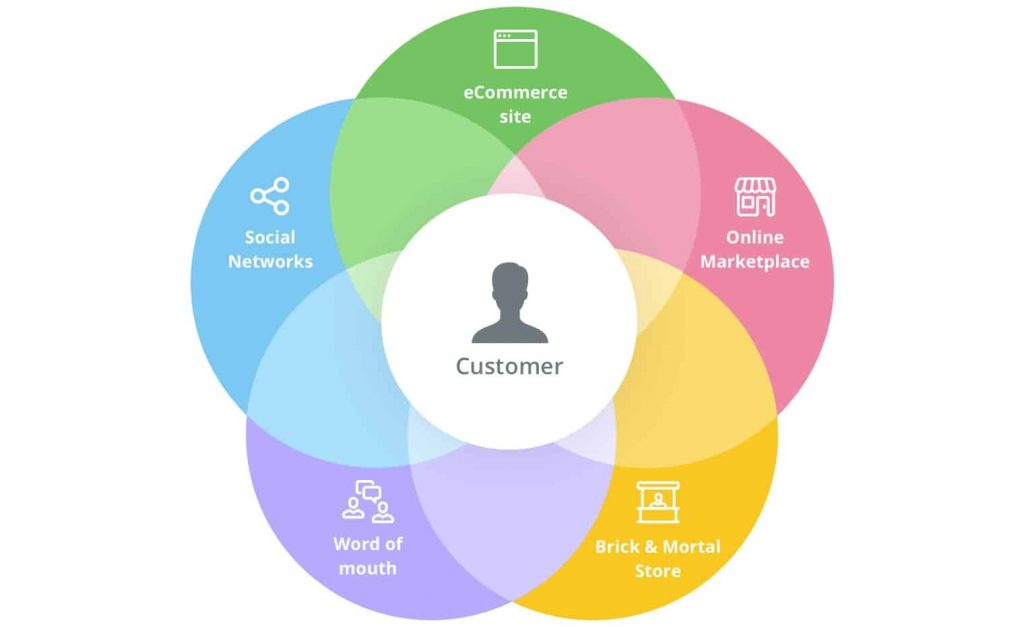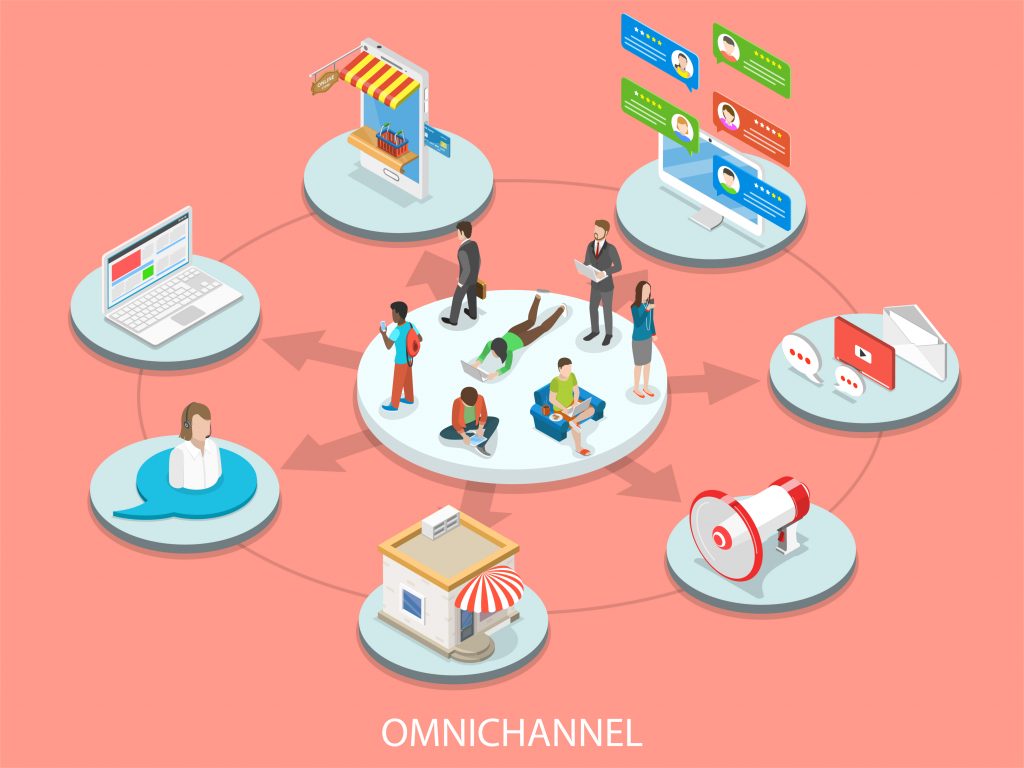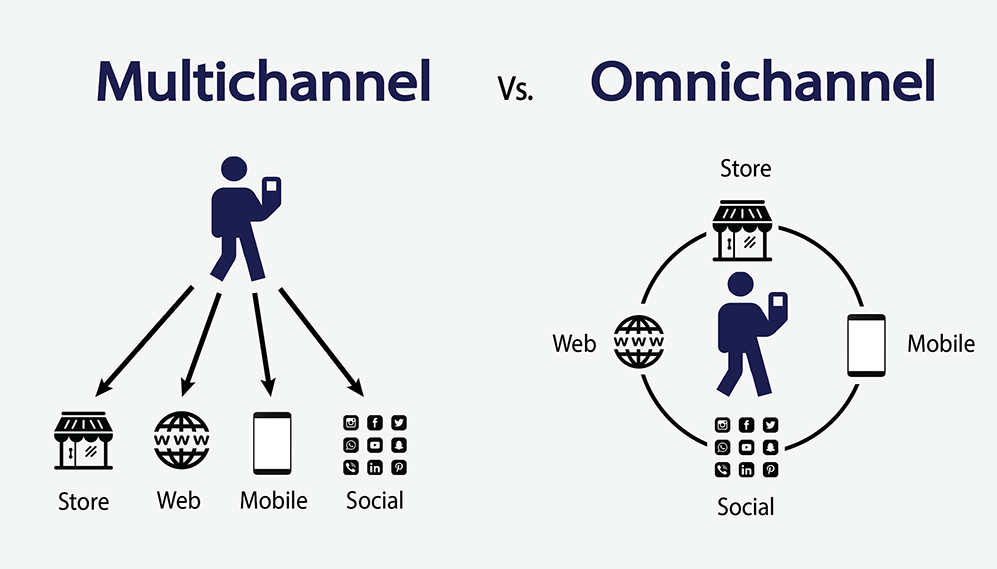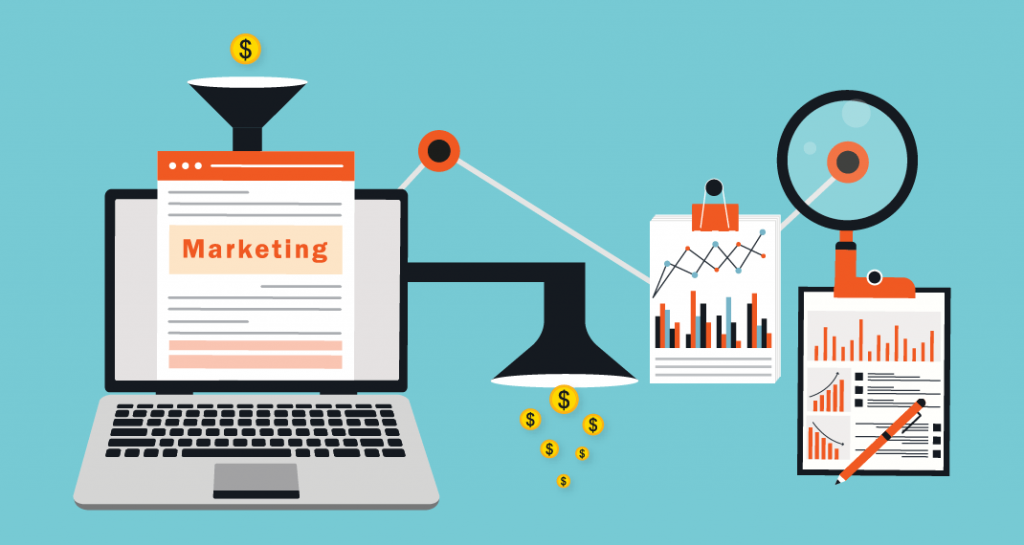What is Omnichannel Marketing?

Author : TechAffinity 28th Sep 2022
The rate of technological advancement is accelerating exponentially. It has a double-edged sword for marketers. On the one hand, it’s getting more straightforward for us to fulfill the fundamental promise of marketing getting the right message to the right person at the right time as time goes on.
On the other hand, we’re drowning in complexity due to Frankensteinian tech stacks, segregated data, confusing reporting, an expanding number of channels, and divergent interpretations of key marketing terminology.

An excellent illustration of a term whose definition has “omnichannel marketing.” Most people would suppose it merely means employing several channels to promote to a specific audience.
You can think about marketing in a whole different way and, in doing so, help yourself fulfill the original promise of marketing by understanding the genuine concept of omnichannel marketing as opposed to “multichannel marketing.”
Definition of omnichannel
To enhance the consumer experience and foster better relationships across all potential channels and touchpoints, omnichannel is a cross-channel content strategy. It covers point of sale, offline and online experiences, including traditional and digital platforms.
Definition of Omnichannel Marketing
When you peel back the layers, you’ll find fully connected customer, product, and sales data at the heart of multichannel marketing.

Customer profiles are created that are comprehensive because of this smooth connectivity. It enables marketers to build unified (or integrated) purchasing experiences while giving them better visibility into how customers interact when switching between channels.
Customers can shop online from a desktop or mobile device, over the phone, or in a physical store, and the experience will be seamless and consistent since each channel works together to create a unified one.
Omnichannel marketing examples include:
- When making in-store purchases, a customer who receives an SMS message about a bargain or promotion
- A customer who browses a website adds items to their online shopping cart and then receives a cart abandonment email.
- Retargeting advertisements for abandoned cart items that a customer added in-app
Marketing: Multichannel vs. Omnichannel
Even though both strategies emphasize using a variety of channels to connect with customers and prospects, omnichannel and multichannel marketing are poles distinct.

We wish to assist in making a distinction between the two because the boundaries are so hazy and the discussion is so frequent.
- Utilizing more than one channel to carry out campaigns is known as multichannel marketing. This is frequently carried out manually, one channel at a time. On a “quantity over quality” premise, content with minimal to no distinction or personalization is released on every available channel.
- Omnichannel marketing is wholly focused on the customer. To decide which messages to deliver to which customers through which channels at what times, it uses a data-led, AI-driven strategy to comprehend complicated data points like customer behavior, preferred channels, and lifecycle stage (to name a few). The result is a smooth, highly customized consumer experience that is significantly more likely to increase sales.
3 Key Distinctions Between Multichannel & Omnichannel Marketing
Omnichannel marketing genuinely puts the consumer at the center to ensure an entirely consistent, unified experience at every touch point, as opposed to simply enabling that touch point, which is how multi- and omnichannel approaches differ from one another.
We may focus on four significant distinctions to more clearly illustrate the distinctiveness of multichannel and omnichannel marketing strategies.
Customer vs Channel
The multichannel strategy seeks to spread the news across the most channels possible. Multichannel marketing aims to reach as many customers as possible; the more, the merrier. Social media and email are the most common channels businesses use with a multichannel strategy to engage their customers.
The omnichannel strategy, on the other hand, unites and combines every channel to engage customers holistically.
Customers have been targeted by one-size-fits-all multichannel marketing for far too long. Customers and potential customers will at best find this somewhat annoying. At the very least, they’ll be rushing to click “unsubscribe” or “report.”
Omnichannel initiatives that are well performed have the opposite effect. The message you send to customers is apparent when you pay attention to the subtleties of their behavior and purchase history and use that data to fuel personalization. We’re here for you, too.
Comparing firms with and without omnichannel programs in place, businesses with well-defined omnichannel customer experience strategies earn an average 91% higher year-over-year gain in customer retention rate.
Engagement vs Consistency
Consistency is the second significant distinction between the methods, and it is a result of omnichannel’s emphasis on the customer experience. Customers will always receive the same experience and messaging thanks to omnichannel marketing.
A consistent brand image and message foster an elevated sense of familiarity and stronger brand relationships. When establishing an omnichannel marketing strategy, marketers must make sure that the messaging is understood and supported by all internal departments. For instance, for omnichannel deployment to be successful, the PR, customer success, social media, and sales teams must be clear and aligned.
Effort vs Effortless
According to Misia Tramp, the EVP of Insights and Innovations for Tahzoois, “understanding how to minimize effort from the consumer experience” is a focus of omnichannel marketing.
The author Tramp continues, “There is a propensity to view the numerous channels available to communicate with consumers nowadays as merely additional tools to be exploited. That represents a multichannel strategy. Using data, omnichannel means identifying areas where the consumer experience requires effort and figuring out ways to reduce rather than increase it.
Both the smooth deployment of campaigns across several channels to various audiences and an easy-going shopping experience for customers are goals of omnichannel marketing.
Omnichannel Marketing’s Advantages
Generally speaking, “omnichannel” is thought to be the industry’s north star. While having and supporting numerous channels is undoubtedly a good thing, the objective should be seamless unification, integration, and automated execution.
The following advantages might be realized by your company with the aid of an effective omnichannel marketing strategy:
Increasing customer loyalty
Customers buy from the companies they respect and believe in. An audience member’s experience is individualized and consistent across all platforms thanks to omnichannel marketing initiatives. This strategy boosts client loyalty and retention while also improving the overall customer experience.
Enhance brand recall
Cross channel marketing platform consistency, which is a focus of omnichannel marketing, guarantees that your clients will perceive your brand consistently across all platforms and gadgets. Your clients’ ability to recall your brand is strengthened by this constancy. Your consumer base will be more likely to purchase if they can easily recollect your brand.
Increases in Revenue Are Realized
Omnichannel methods increase brand recall, reinforce consumer loyalty, and encourage repeat business. Through content personalization and word-of-mouth advertising, these initiatives aid firms in retaining existing customers and luring in new ones. More customers mean more business, which therefore means more money.
How to Create a Successful Omnichannel Marketing Strategy in 6 Easy Steps
The customer journey has become more complicated as a result of the expanding number of marketing channels available. To quickly develop an omnichannel marketing plan that will delight clients at all touchpoints, follow these steps:
Keep the consumer in mind
The fact that omnichannel prioritizes the customer is a key distinction between it and multichannel marketing. By carefully analyzing the customer journey, omnichannel success is first realized.
Examine each point of contact a buyer has before becoming a customer. Does the consumer experience across these touchpoints remain consistent? If not, you need to assemble the required departments to make this change. To support customer experiences, each department should be aligned with a customer-first approach.
Utilize Client Data
If you want to earn their engagement in a market with many options and little time, you must offer pertinent, customized interactions. And if your company is already generating revenue, chances are good that you already have the client data you need to achieve this.
You’ll be able to provide content that is catered to your client’s interests by utilizing your consumer data. For instance, you can utilize your customer data to design campaigns that offer promotions on goods that go well with previous purchases or that you know consumers like them have already purchased, as opposed to delivering batch-and-blast, haphazard email campaigns.
Personalize and segment your user base
The key to effective multichannel marketing tactics is 1:1 personalization. Individualized communications are more effective at increasing engagement, making your clients feel valued, and cultivating enduring loyalty.
A comprehensive client profile and astute audience segmentation are the foundation of true personalization. You must segment your consumer base depending on the data points that are most pertinent to your objectives before designing customized marketing efforts, such as:
- Buyer persona
- Past purchase
- Lifecycle stage
- Average order value
- Product affinities
- Loyalty status
By doing this, you’ll gain a deeper comprehension of the audience you’re trying to reach. This will enable you to provide customized content that enhances the customer experience, promotes channel consistency, and raises sales.
Maintain Consistency in Messaging Across All Channels
Although interacting with customers across several platforms will boost brand exposure, the messaging you use to do so must be consistent. If it’s not, there’s a chance you’ll give a disjointed brand experience and might be more harmful than helpful.
If you haven’t done so already, developing a brand tone of voice document can assist in unifying your messaging and guarantee that content produced by internal and external parties is both true to your brand and pertinent to your audience.
Utilize the Proper MarTech
The tools and solutions you’ll employ to engage with your customers must be decided upon once you’ve determined who they are. It can be challenging to select the tools that work with your tech stack, but to get started, we advise looking into the following options:

- Customer Relationship Management (CRM) Software
- Fully Integrated Customer Engagement Platform
- Marketing Automation Tools
- Social Media Management Solutions
- Data Analytics Tools
Utilize the Proper Metrics to Test & Track Your Success
Marketers must quickly access reliable sales data to perform their duties efficiently. Fact.
The job of every marketer is made considerably easier with access to reporting dashboards that demonstrate which client segments, product categories, and channels are generating the most money.
In addition to the typical marketing data you’d anticipate seeing in a reporting tool, when you’re evaluating a customer engagement platform, find out if it enables you to see metrics like:
- Overall revenue
- Active customers
- Average order value
- Repeat purchase
- Customer churn
- Premium customer revenue
- Units per transaction
By monitoring the appropriate indicators with the appropriate technologies, you may produce reliable data reports and gain useful insights for campaign optimization. You can more accurately report on the achievements and failures of your omnichannel strategy by collecting the appropriate metrics.
With this priceless information, you can pinpoint problem areas, alter your approach, and run focused tests to improve future campaign outcomes.
The customer is seen, valued, and heard through omnichannel marketing. Customers find it simpler to purchase what they want, where they want, and how they want with improved multichannel integration. Because of this focus on flawless customer service, marketers favor omnichannel marketing.
In our upcoming article, we’ll give you five essential strategies you can apply right immediately to kick-start your omnichannel marketing strategy as the industry changes and welcomes it more.
At TechAffinity, it is our mission, to be future-ready and help you stay on top of current market trends. In alignment with that mission, we want to empower you to get ahead in the market by leveraging our expertise in Omnichannel digital marketing. Please feel free to Get in touch with us. You can also drop an email at media@techaffinity.com with all your queries.